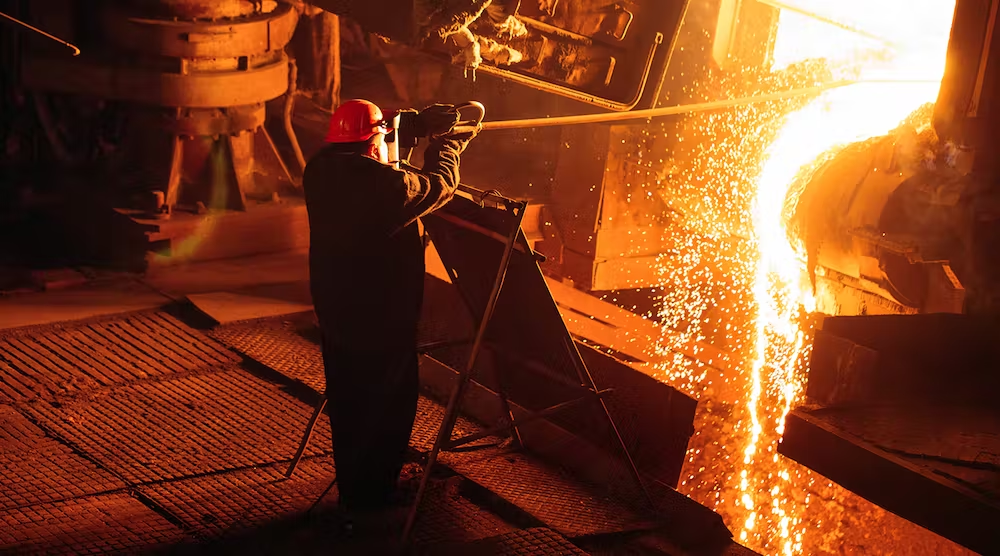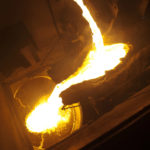Refractory erosion in iron melting is seldom attributable to mechanical wear. Erosion generally is the aftermath of slag’s chemical attack – chemical reactions between slag and refractory – producing reaction byproducts that enter the slag. The overall effect is refractory’s effective protection layer, the thickness of the refractory lining, is continually eaten away, eventually leading to failure.
Refractory industry ceramic engineers have long used a very precise, real-time method to observe refractory-molten metal interactions via X-ray, and to evaluate refractory resistance to slag attack
The Sessile Drop Test consists of placing a drop of molten iron on a refractory material to be tested, and placing the apparatus into a precisely controlled, high-temperature furnace containing an inert atmosphere where the interface between the droplet and refractory can be continuously viewed by real time x-ray. Initial reactions between the metal and refractory are minimal due to the inert atmosphere. Then, oxygen is added to the atmosphere, which instantly causes iron oxide (FeO) to form on the molten droplet’s surface. Once iron oxide is present, rapid interactions between the molten iron and the refractory begin.
Without iron oxide, chemical reactions between the refractory and the molten iron are very subdued, almost non-existent. Iron oxide is the catalyst that changes everything, which demonstrates iron oxide’s far-reaching role in initiating refractory chemical erosion.
Two-pronged attack — Refractory erosion results from two sources. First, iron oxide overwhelms the refractory’s individual constituents, quickly reacting with those ingredients and converting them into useless slag. This type of iron-oxide attack simply overwhelms refractories regardless of their quality or purity.
Next comes a chemical attack of silica or other impurities within the refractory that affects its overall performance. The precise nature of these attacks is beyond the scope of this analysis, but the chemical reaction’s overall effect on the refractory’s service and performance pales in comparison to iron oxide’s gruesome attack.
Refractory erosion can be effectively stopped, and refractory service life extended to unimaginable lengths, if iron oxide is controlled. Iron oxide-induced attack must be solved before the material’s designed refractoriness can benefit the specific application.
Refractories are blended to incorporate the specific properties of each ingredient. When iron oxide doesn’t steam-roller the application, the specific refractory properties designed into new refractories enhance service life beyond current performance, raising it to new levels.
Cupolas operating with low iron-oxide slag and with specially formulated refractories are setting benchmarks for service life, and the melting personnel endorse this great improvement. With the new refractory and low iron-oxide slag, cupolas can be drained at the end of major campaigns and require no refractory repair. Slag has not built up anywhere, and the small metal-line slag clumps are chipped off quickly and easily. No overnight or weekend repair is needed — unheard of for normal cupola operation.
Read more: Treating Molten Metal to Reduce Refractory Erosion






